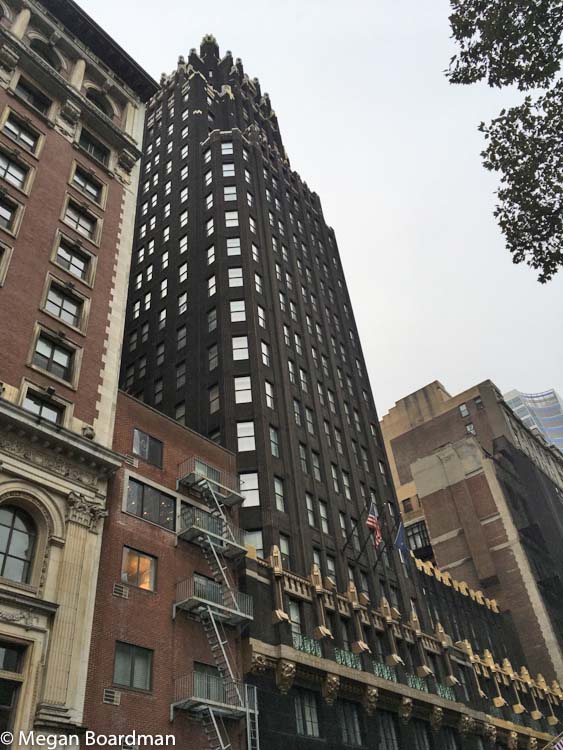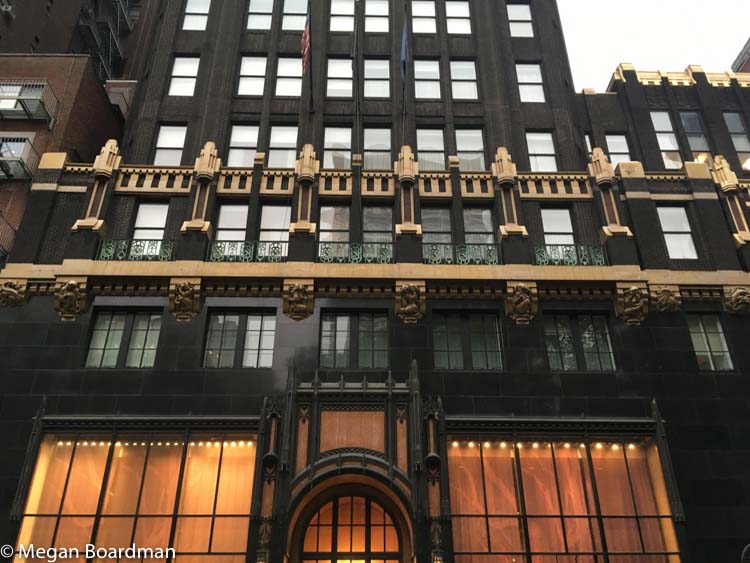|
Radiator Building, New
York

Architect
|
Raymond M. Hood
|
Date Built
|
1923 - 1924
|
Location
|
40 West 40th
Street, Borough of Manhattan
American Radiator Building (now American
Standard Building)
|
Description
|
A document by the Landmarks
Preservation Commission, dated November 12, 1974,
describes the Radiator Building as "... a
striking twenty-three story black and gold
tower, ... one of the finest and most
significant skyscrapers in Manhattan. Designed
by Raymond M. Hood and built in 1923-24, the
American Radiator Building initiated a new
trend in skyscraper design in New York City
with its bold cubic massing of forms - often
associated with the Art Deco style - and its
freedom from the Beaux-Arts classical details
that had previously encumbered New York City
skyscrapers."

It goes on to add that, "... The most
striking feature of the building is its
unusual black and gold color scheme. In 1926,
Talbot Hamlin, the noted architectural
historian, described it as 'the most daring
experiment in color in modern buildings yet
made in
America.' To prevent the many windows
from looking like black holes and destroying
the solid effect of the tower, Hood decided to
face the walls with black brick. Gold accents
at the tops of the setback pinnacles provide a
handsome contrast to the black walls. Hood's
interest in color, which is not generally
associated with the classical tradition, was
also expressed in many of his other buildings.
The building was equally dramatic at night
when it was floodlighted.
It became, in
effect, an advertisement for the American
Radiator Company. The vivid effects of
coloration made it look like a giant glowing
coal, even though Hood denied his intention of
creating this conscious symbolic effect."

Apparently an article in the New York Times on the
20th of January 1924 called the building, "...
A daring departure from the conventional in
office building construction ... Unlike any
office building in the country, the new
structure is faced entirely with black brick
with golden colored trimming, (which) worked
together to give a rich black and gold
decorative effect. The building has already
provoked wide discussion in professional
circles because of its unique design....An
interesting feature is that over 90 percent of
the floor space is within 25 feet of the
windows."


|
|

